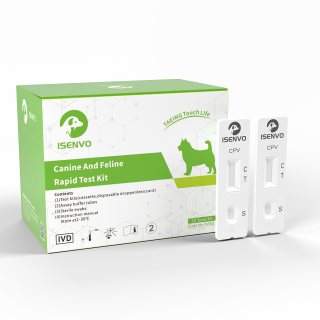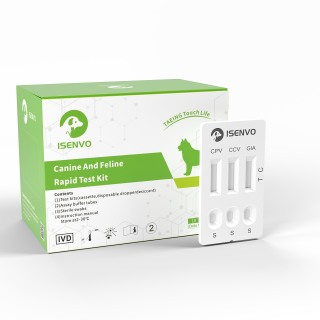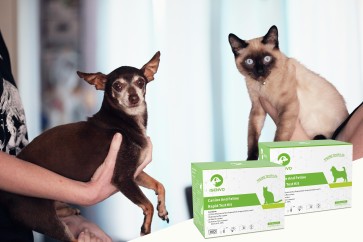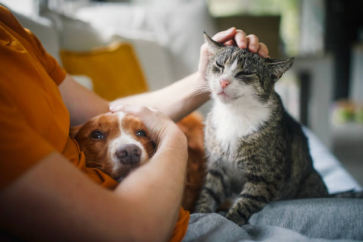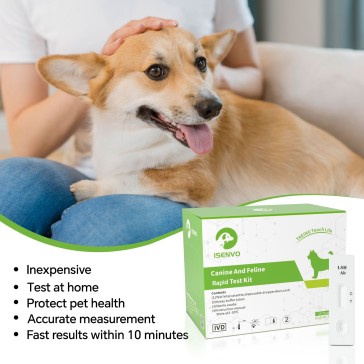What is CPV?
CPV (Canine Parvovirus) is a highly contagious and potentially fatal viral disease that primarily affects puppies and unvaccinated dogs. The virus attacks a dog's digestive and immune systems, causing severe vomiting, bloody diarrhea, dehydration, high fever, and low white blood cell counts. Without prompt treatment, CPV has an extremely high mortality rate.
How CPV Spreads
CPV is transmitted through:
-
Direct contact: Exposure to infected dogs' feces, vomit, or saliva.
-
Indirect contact: The virus can survive in the environment for months, contaminating toys, food bowls, clothing, or floors.
-
Human carriers: Owners or visitors may unknowingly bring the virus home on shoes or clothing.
How to Prevent CPV
1. Vaccinate on Schedule
Vaccination is the most effective prevention. Puppies should receive their first CPV vaccine at 6-8 weeks, followed by boosters every 3-4 weeks until 16 weeks old. Adult dogs need regular booster shots.
2. Use CPV Rapid Test (At-Home Detection)
If your dog shows suspicious symptoms (vomiting, diarrhea, lethargy), you can use a Canine Parvovirus Rapid Test Kit for preliminary screening.
How to Use a CPV Rapid Test Kit:
-
Collect sample: Swab fresh feces or rectal secretions.
-
Dilute sample: Mix the sample with the provided buffer solution.
-
Apply to test card: Add the mixture to the sample well and wait 10-15 minutes.
-
Read results:
-
Two lines (C+T): Positive (seek veterinary care immediately).
-
One line (C): Negative (but consult a vet if symptoms persist).
-
No lines or only T line: Invalid test, retest.
-
⚠️ Note: At-home tests are not 100% definitive. If positive or symptoms worsen, see a vet immediately!
3. Maintain Clean Environment
-
Regularly disinfect your dog’s living area with diluted bleach (1:30 ratio) or vet-approved cleaners.
-
Avoid taking unvaccinated puppies to high-risk areas (pet stores, dog parks).
4. Avoid Contact with Infected Dogs
-
Keep puppies away from unknown dogs until fully vaccinated (around 16 weeks).
-
If CPV outbreaks occur nearby, limit outdoor exposure.
5. Boost Immunity
-
Feed high-quality dog food for balanced nutrition.
-
Consider vet-recommended probiotics for gut health.
Daily Care Tips
-
Deworm regularly: Parasites weaken immunity, increasing CPV risk.
-
Keep environment dry and warm: Damp, cold conditions help the virus survive longer.
-
Minimize stress: Avoid sudden environmental changes or excessive anxiety triggers.
Early CPV Symptoms
Seek immediate testing/vet care if your dog shows:
✅ Severe vomiting or bloody diarrhea
✅ Loss of appetite, extreme lethargy
✅ High fever or abnormally low body temperature
Conclusion
While CPV is dangerous, prevention + rapid testing + prompt treatment can significantly reduce risks. Vaccination + hygiene + CPV Rapid Tests are your best defense!
Protect your pup—start prevention today!
Need more advice? Feel free to ask in the comments!




